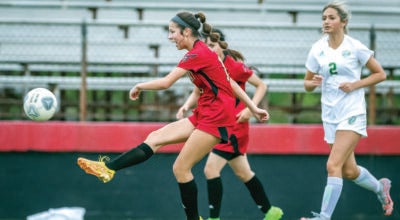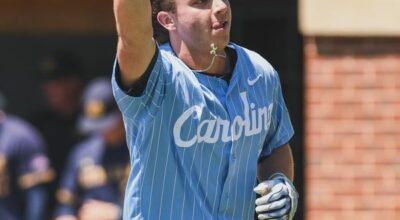Golf: Tiger is new King of Pain
Published 12:00 am Wednesday, June 18, 2008
By Gwen Knapp
San Francisco Chronicle
SAN DIEGO ó Still four major victories behind Jack Nicklaus, Tiger Woods surpassed Michael Jordan on Monday. Until Woods won the U.S. Open on the 91st hole, in a sudden-death playoff after a full-round playoff, he and Jordan stood side by side.
They are the two most driven, indomitable, clutch athletes of our time. They both transcend sports. None of that has changed.
They each celebrated a championship by sobbing uncontrollably, in memory of their departed fathers.
They both have won a championship in extraordinary pain. Jordan, dehydrated and several pounds lighter because of an intestinal virus, scored 38 points in Game 5 of the 1997 NBA Finals. Jordan had to be helped off the court by teammate Scottie Pippen, and the Bulls’ win over the Jazz that night is often remembered as “the Flu Game.”
But Jordan had just one night in agony. Woods had five days. Jordan needed only to follow the athlete’s credo about ignoring pain. He didn’t have to set aside fear as well. He didn’t have to worry that every step he took could imperil his future in basketball.
Woods’ winces and grimaces at Torrey Pines didn’t just signal twinges in his left knee, which had undergone surgery only two months earlier. They were reminders of his doctor’s advice, which Woods had curtly summarized Sunday: “Don’t play golf.”
After Monday’s win, reporters pressed him harder. Was he warned that he might permanently damage the knee by finishing the Open?
“I’m not really good at listening to doctor’s orders too well,” he said. “So I end up ó hey, I won this week, so it is what it is.”
Another reporter pushed even harder. Did the doctor say his injury could get worse if he played?
Woods didn’t say a word. He just nodded his head.
“Yes?” the reporter asked.
More nodding.
Did he damage it?
“Um, maybe,” he said.
At least, he was more forthcoming about winning under such conditions. He said the 2008 U.S. Open probably ranked as his best tournament ever, surpassing his first major victory, a 12-stroke win at the 1997 Masters that converted all the Tiger hype into substance.
“This week had a lot of doubt to it,” he said. He hadn’t walked 18 holes since finishing second at Augusta in April. To win this weekend, he had to walk 91. More to the point, he had to think for 91. The U.S. Open is the most mentally taxing, emotionally grueling sports event imaginable.
With all due respect to Willis Reed, Kirk Gibson, Kerri Strug and Jordan in the Flu Game, Woods’ win was more impressive than their feats under duress. They might have been in greater pain, but their sports allowed them to get by on the numbing effects of adrenaline, or in Gibson and Strug’s cases, the knowledge that they needed to endure only one moment of agony. Woods had to play with mental discipline and restraint over five rounds of golf.
He also had to play against a profoundly stubborn, remarkably inspired opponent. With some more due respect, let’s just say that the Jazz in 1997 played as if they knew the Bulls would take them out. Rocco Mediate practically genuflected to Woods when he talked about him, but on the golf course, he was fearless.
He didn’t cave in when Woods took a three-stroke lead after 10 holes. He came back and passed him over the next five holes. At that point, Woods should have been deflated. On 16, when his birdie putt stopped at the lip of the hole, as if someone had applied brakes to it, he should have been irreparably frustrated.
But then he wouldn’t be Tiger Woods, and this Open wouldn’t have been the greatest achievement in an already stunning career.
For the record, Woods has won another tournament about two months after knee surgery. It was the 2003 Buick Invitational, held here at Torrey Pines.
But his surgery back then involved the removal of a cyst and the draining of some fluid. The one in April required the repair of cartilage damage, which is more complicated.
The best parallel anyone could imagine was Ben Hogan’s U.S. Open win in 1950, just 16 months after he and his wife were nearly killed when a bus crashed into their car. In the hospital, a blood clot surfaced in one of Hogan’s legs, and doctors had to tie off surrounding veins to keep the clot from moving to his heart. The muscles in his legs atrophied badly during the treatment.
“Well, I was not in as bad of shape as Ben was,” Woods said when someone mentioned the ’50 Open, which also went to a playoff. “Geez, he was in the hospital, and he didn’t know if he was ever going to walk again.”
Woods said he was exactly like other athletes who get hurt and “play through it, suck it up, and get it done.”
Mediate, who has had severe back problems since 1994, doesn’t buy that theory. “He’s not normal,” he said. “He’s way above everything.”
Someone pointed out that Mediate had experienced something many golfers had endured and that they all walked away with a staggering story. He interrupted, saying: “They don’t have this one.”
Nobody does. This Tiger tale stands alone.





